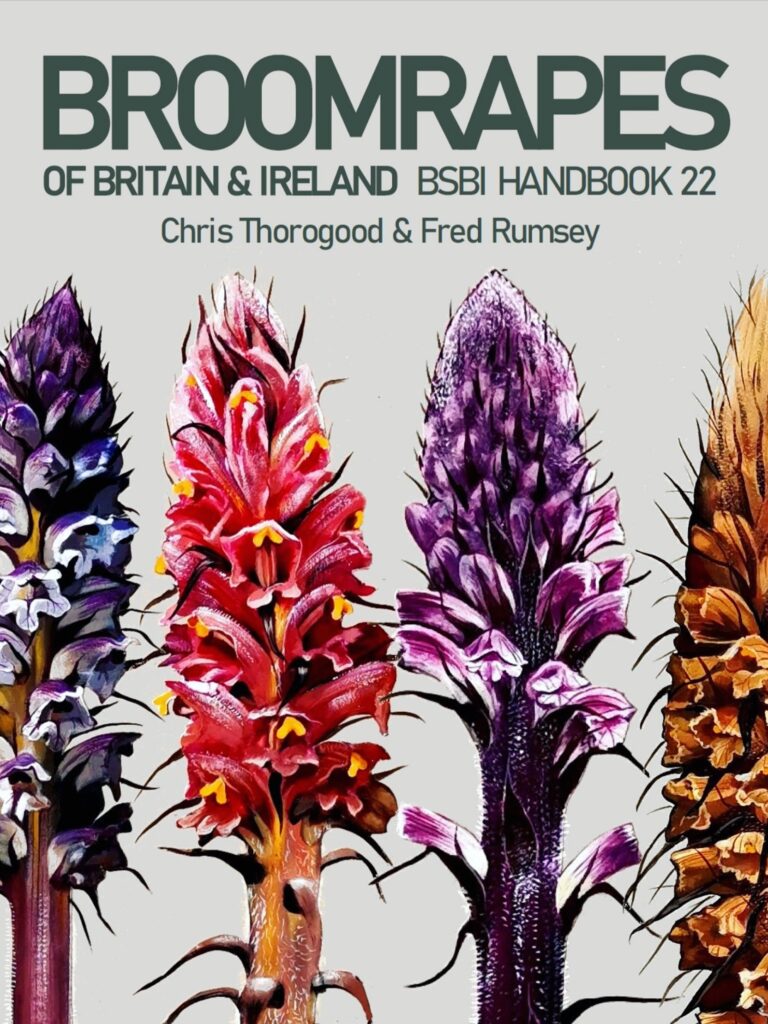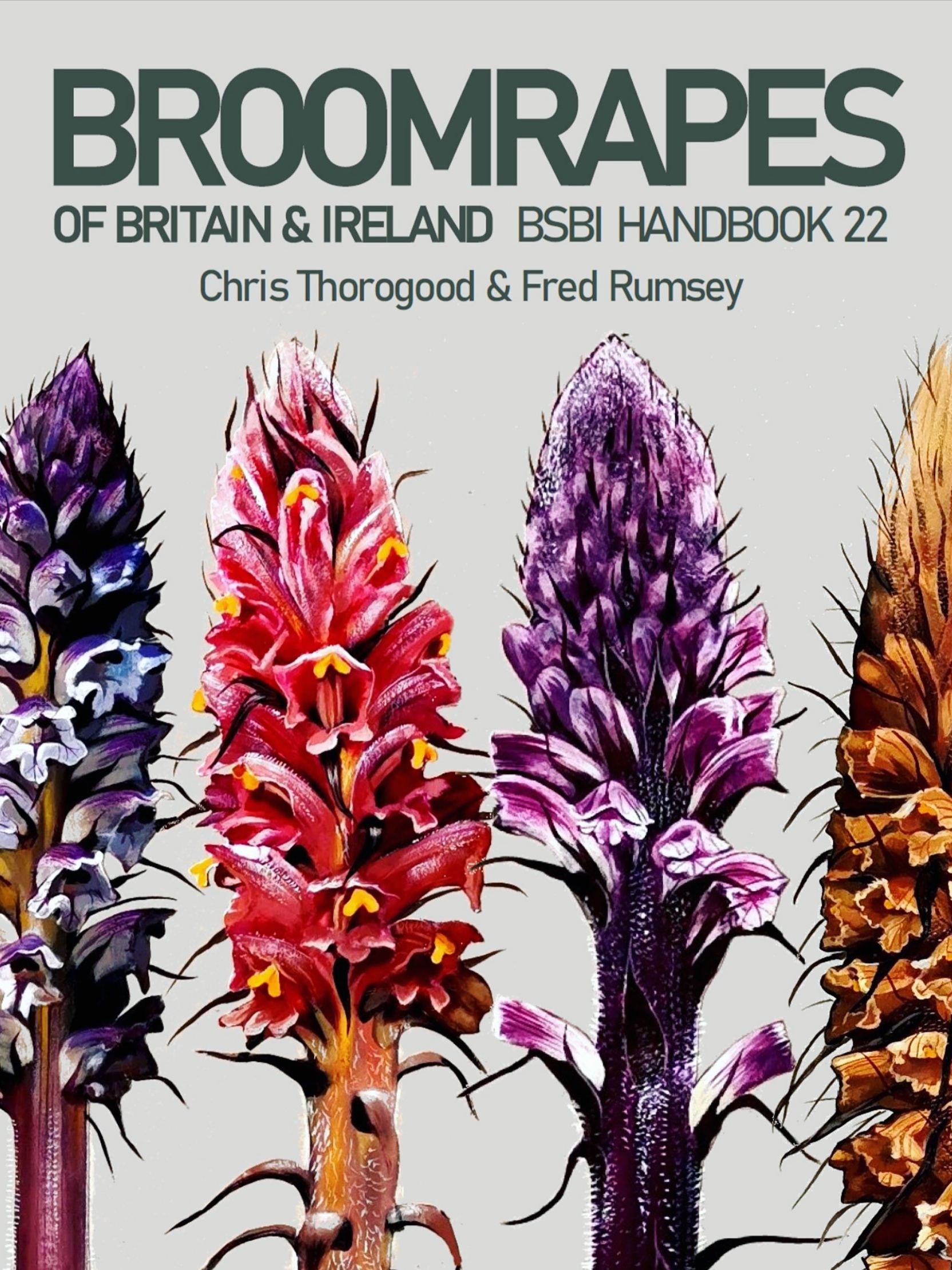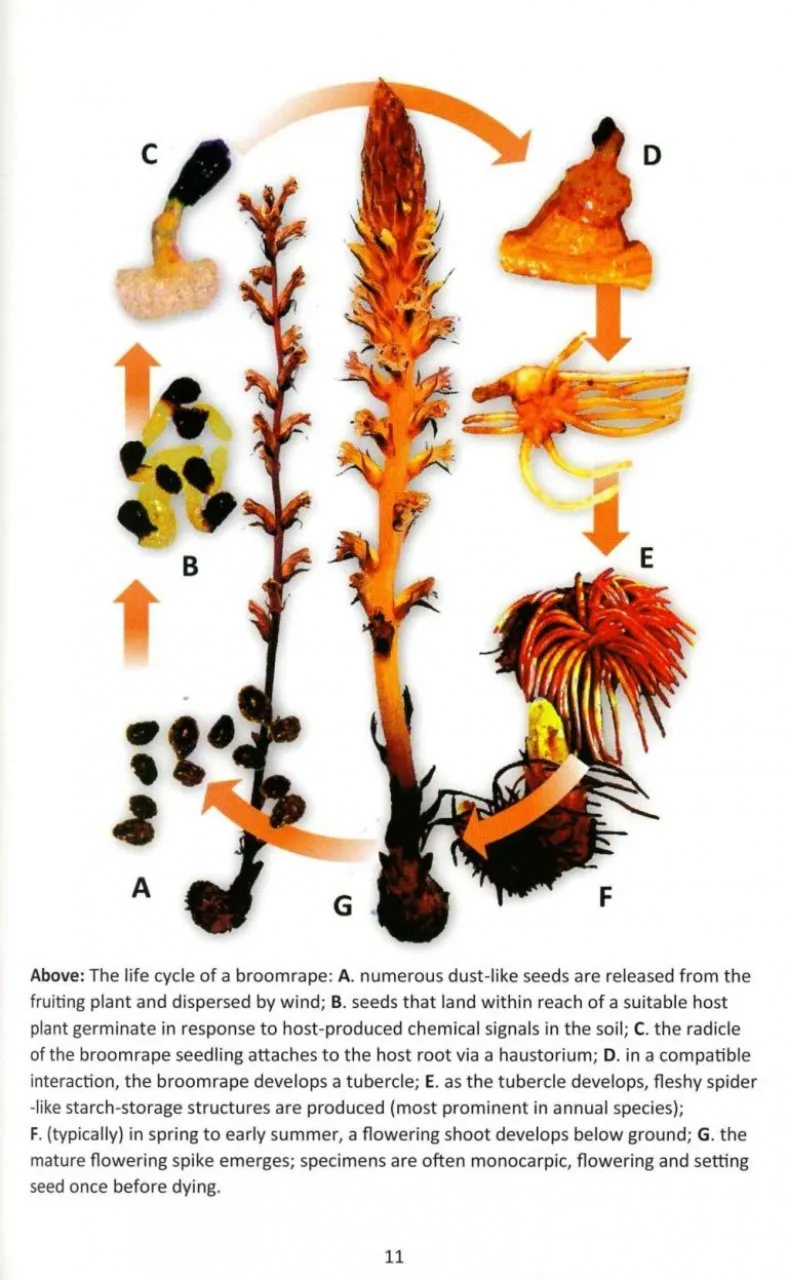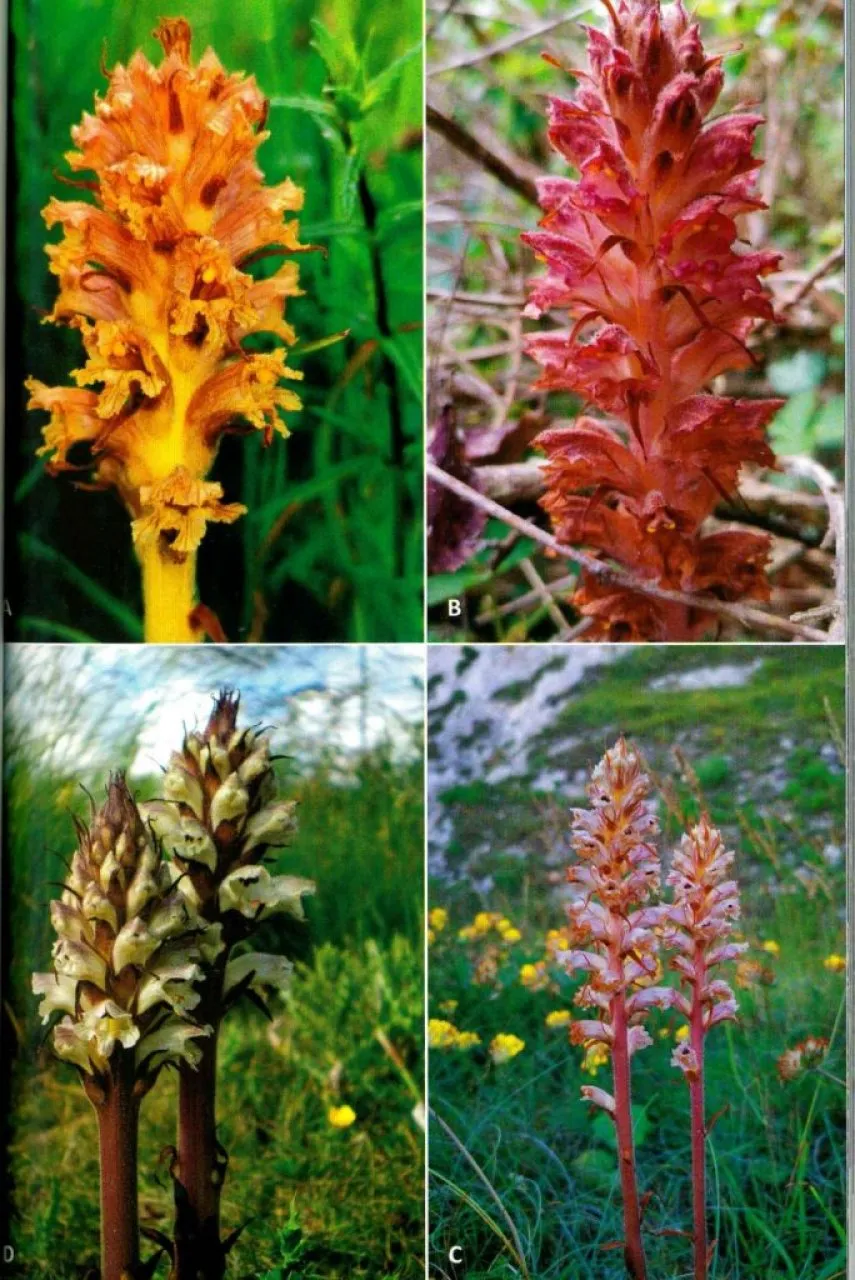This latest, rather splendid BSBI monograph is devoted to the broomrapes, a family of poker-shaped plant parasites which lack chlorophyll and are usually associated with specific host plants. They are easy to spot and usually get a ‘What’s that?’ from non-botanists. Broomrapes are also perhaps the most ‘twitchable’ British plants, after orchids, being weirdly attractive and mostly scarce and unpredictable in their appearance. There are ten resident species, that is nine broomrapes and the toothwort Lathraea, plus six foreign introductions (one of which, Bean Broomrape Orobanche crenata, has the makings of an agricultural pest). No hybrids have yet been found wild in Britain, although they might be difficult to spot.
View this book on the NHBS website
Broomrapes are not difficult to identify in the field, or would not be but for one widespread species, the Common Broomrape Orobanche minor, which is very variable, has a wider range of hosts than the others, and can pop up almost anywhere, including in flower beds. Some of its distinct forms may be on the verge of evolving into new species. Past difficulties in broomrape taxonomy were caused by herbarium botanists working from dried specimens. Broomrapes preserve poorly, turning uniformly brown and dull. In life, during their brief flowering, they are colourful – red, orange, cream, yellow, blue, purple. One species smells deliciously of carnations.
Fittingly, this is easily the most colourful BSBI monograph yet. Nearly half the book consists of colour images of broomrapes in their natural habitat. There are also botanical drawings and updated distribution maps. As usual, the text for each species runs through a full botanical description, key distinguishing features, natural variation, and finally a section combining host plants, habitat and distribution, both historical and present-day. Introductory pages set out the broomrapes’ peculiar lifestyle and ecology, their taxonomic history, with general notes on identification and a key to the British species. At the back there is a glossary and a reference list. Broomrape fans will note that the blue-flowered Yarrow Broomrape, plus the long-extinct Hemp Broomrape, are placed in a separate genus, Phelipanche. The species formerly known as the Oxtongue Broomrape is renamed the Picris Broomrape Orobanche picridis.
This monograph has been meticulously proofread, and is neatly laid out, well printed and generally excellent. I am particularly grateful to the authors for finally nailing down a violet-coloured broomrape which I found, years ago, growing on the seashore near Sandwich. It was Sea Holly Broomrape Orobanche minor subspecies pseudoamethystea, in case you are interested.




